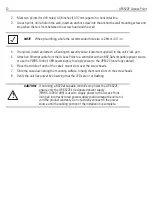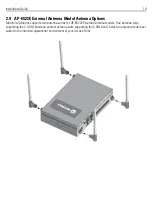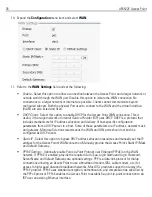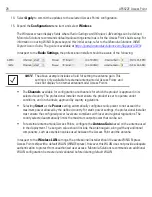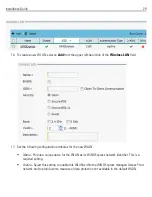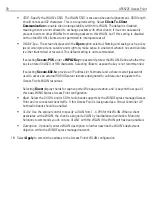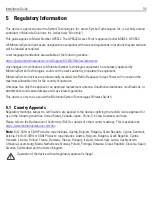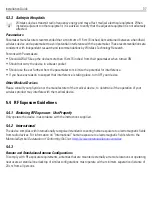
26
AP6522E Access Point
10. Expand the
Configuration
menu item and select
WAN
.
11. Refer to the
WAN Settings
field and set the following:
•
Enable
- Select this option to allow a connection between the Access Point and a larger network or
outside world through the WAN port. Disable this option to isolate the WAN connection. No
connections to a larger network or Internet are possible. Clients cannot communicate beyond
configured subnets. Both the physical
Port
used to connect to the WAN and the virtual
Interface
(VLAN) are also listed and fixed.
•
DHCP Client
- Select this option to enable DHCP for the Access Point WAN connection. This is
useful, if the target network or
Internet Service Provider
(ISP) uses DHCP. DHCP is a protocol that
includes mechanisms for IP address allocation and delivery of host-specific configuration
parameters from a DHCP server to a host. Some of these parameters are IP address, network mask,
and gateway. Motorola Solutions recommends the WAN and LAN ports should not both be
configured as DHCP clients.
•
Static IP -
Select this option to bypass DHCP address allocation resources and manually set the IP
address for the Access Point’s WAN connection. Manually provide the Access Point’s Static IP/Mask
and Default Gateway.
•
PPPoE Settings
- Optionally enable
Point-to-Point Protocol over Ethernet
(PPPoE) on the WAN
network. If PPPoE is enabled, provide the required
Auth Type
,
Login Name
and
Login Password
.
Server Name and Default Gateway are optional settings. PPP is a data-link protocol for dialup
connections allowing an Access Point to use a broadband modem (DSL, cable modem, etc.) for
access to high-speed data and broadband networks. Most DSL providers support (or deploy) the
PPPoE protocol. PPPoE uses standard encryption, authentication, and compression as specified by
the PPPoE protocol. PPPoE enables the Access Point to establish a point-to-point connection to an
ISP over an existing Ethernet interface.

